Abstract
In rocks of late Paleoproterozoic and Mesoproterozoic age (ca. 1700-1000 million years ago), probable eukaryotic microfossils are widespread and well preserved, but assemblage and global diversities are low and turnover is slow. Near the Mesoproterozoic-Neoproterozoic boundary (1000 million years ago), red, green, and chromophytic algae diversified; molecular phylogenies suggest that this was part of a broader radiation of "higher" eukaryotic phyla. Observed diversity levels for protistan microfossils increased significantly at this time, as did turnover rates. Coincident with the Cambrian radiation of marine invertebrates, protistan microfossils again doubled in diversity and rates of turnover increased by an order of magnitude. Evidently, the Cambrian diversification of animals strongly influenced evolutionary rates, within clades already present in marine communities, implying an important role for ecology in fueling a Cambrian explosion that extends across kingdoms.
Full text
PDF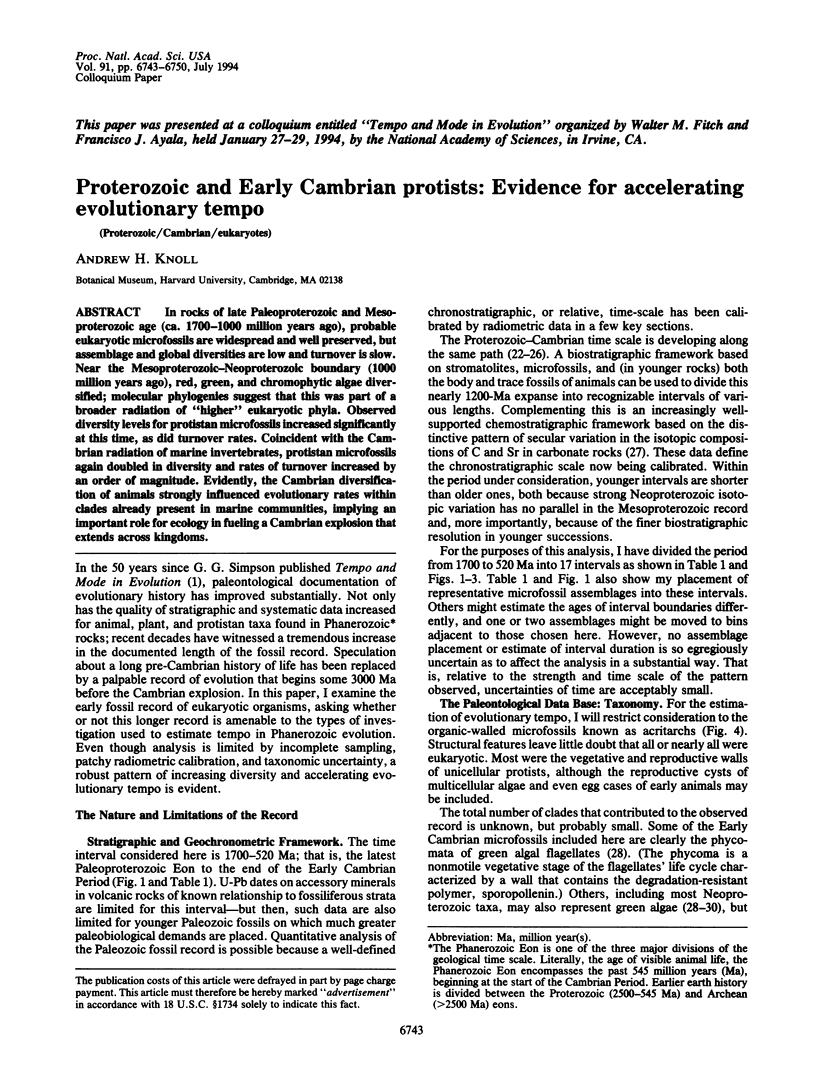
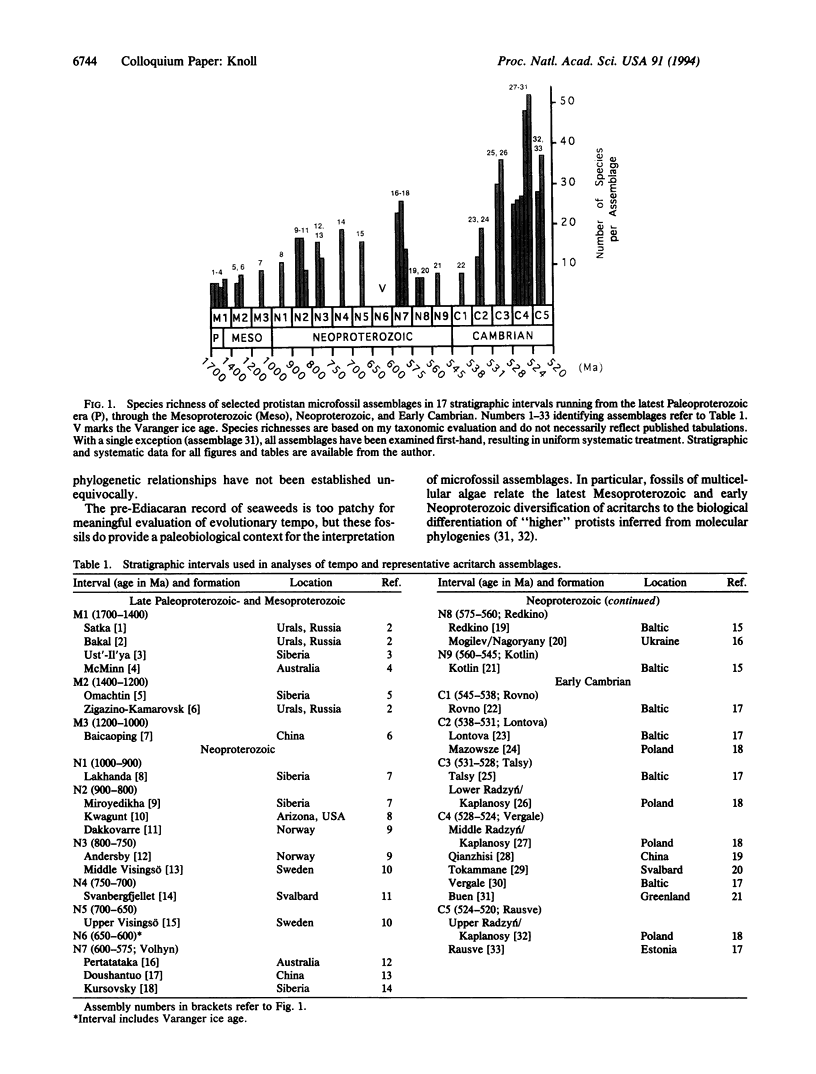
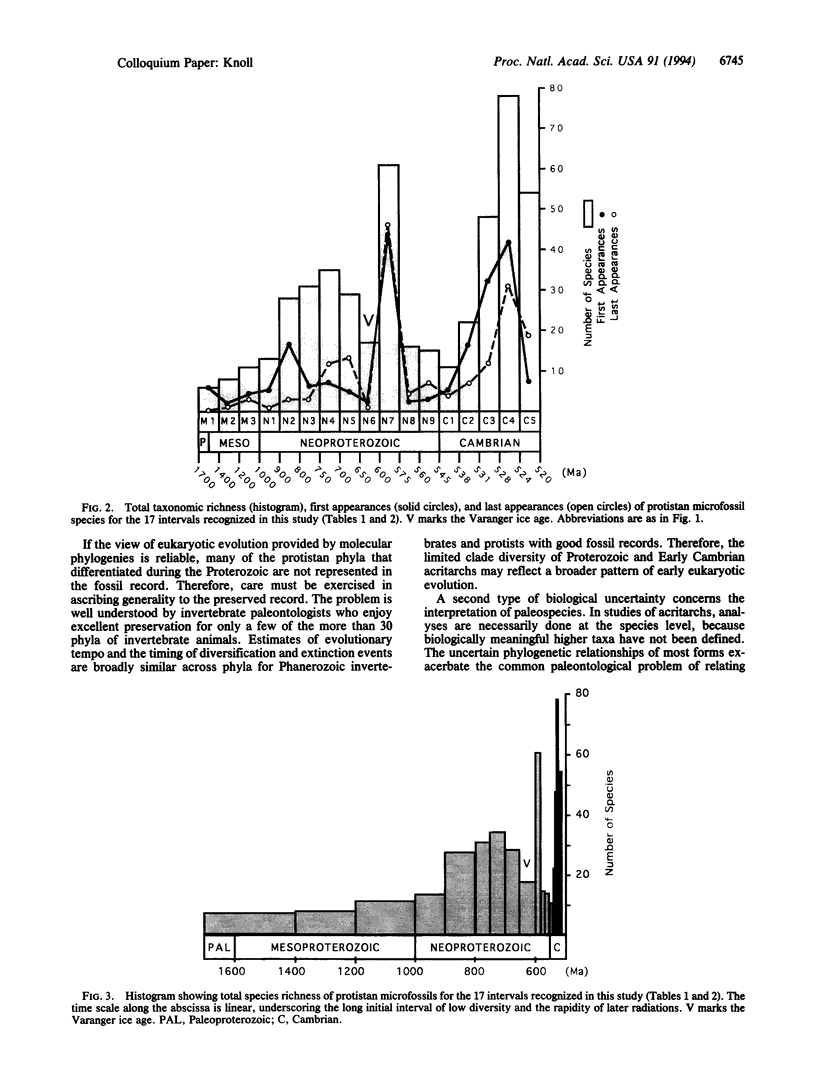
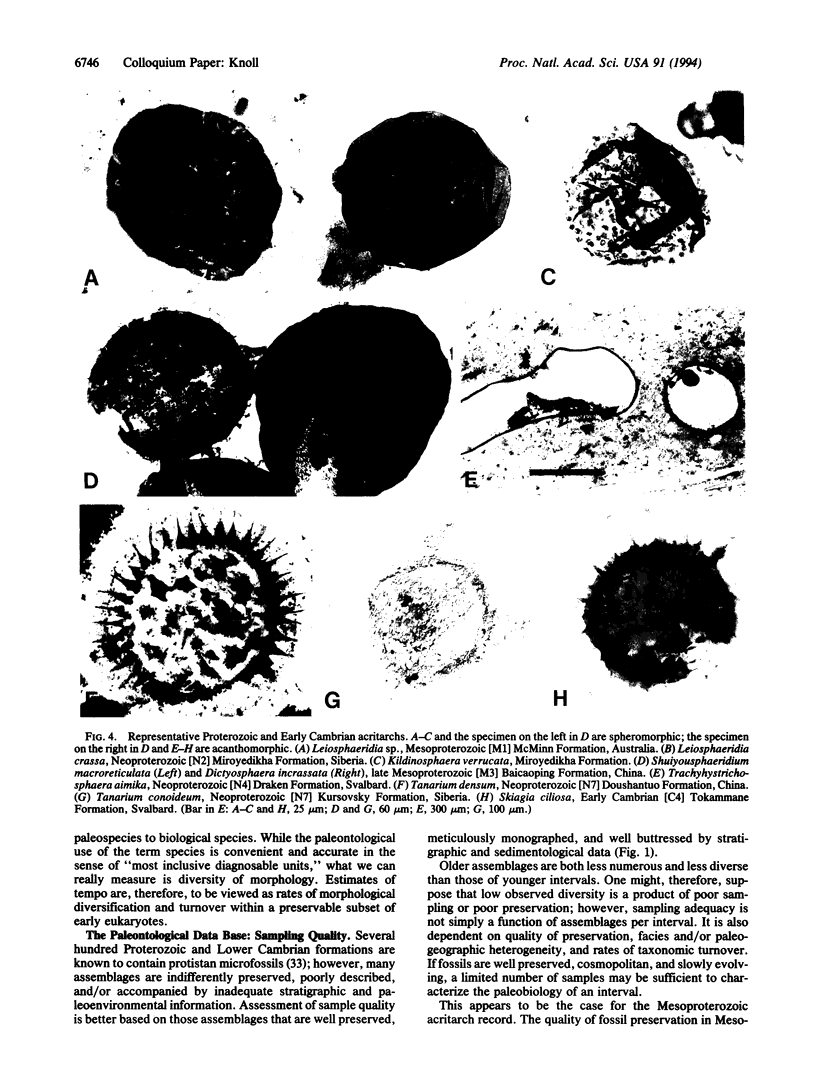

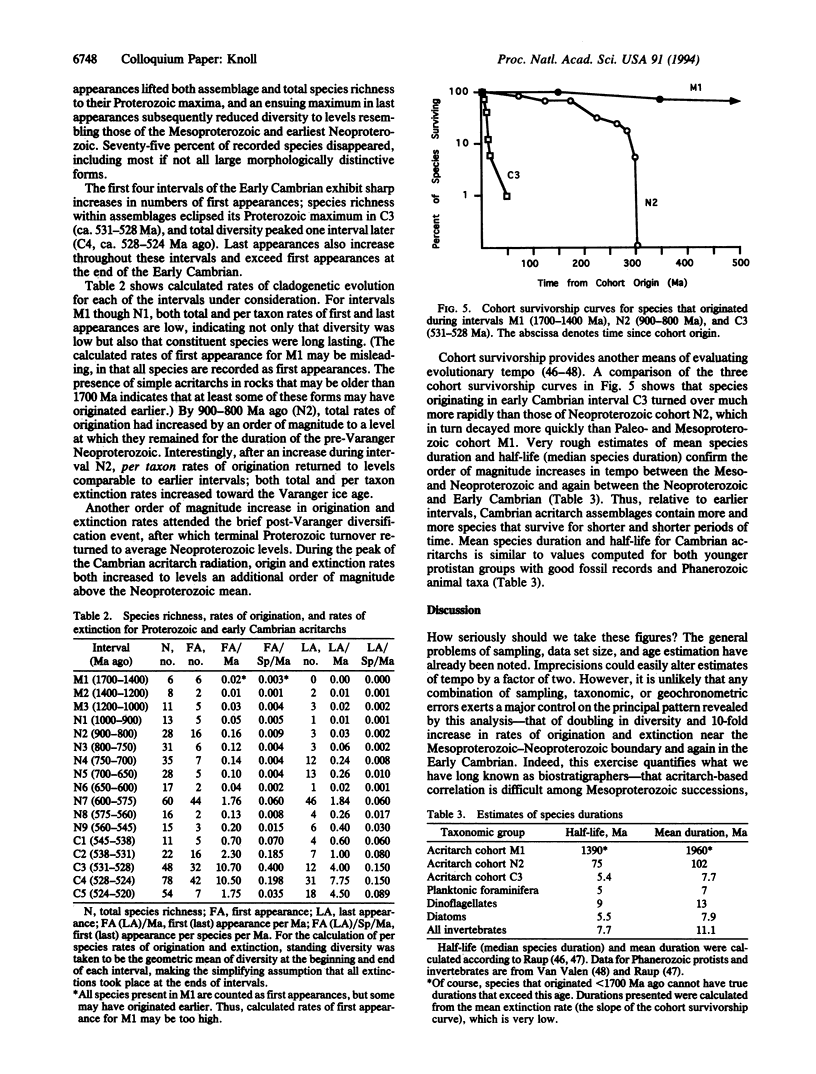

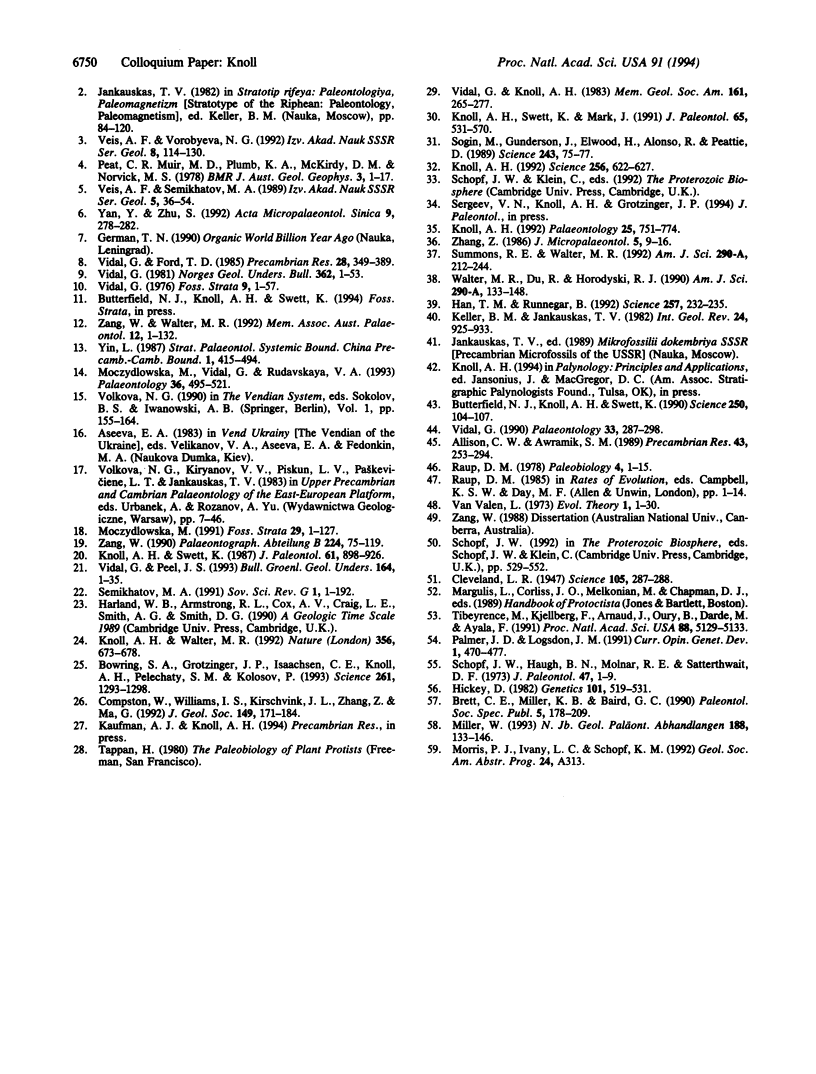
Images in this article
Selected References
These references are in PubMed. This may not be the complete list of references from this article.
- Bowring S. A., Grotzinger J. P., Isachsen C. E., Knoll A. H., Pelechaty S. M., Kolosov P. Calibrating rates of early Cambrian evolution. Science. 1993 Sep 3;261:1293–1298. doi: 10.1126/science.11539488. [DOI] [PubMed] [Google Scholar]
- Butterfield N. J., Knoll A. H., Swett K. A bangiophyte red alga from the Proterozoic of arctic Canada. Science. 1990 Oct 5;250:104–107. doi: 10.1126/science.11538072. [DOI] [PubMed] [Google Scholar]
- Cleveland L. R. The Origin and Evolution of Meiosis. Science. 1947 Mar 14;105(2724):287–289. doi: 10.1126/science.105.2724.287. [DOI] [PubMed] [Google Scholar]
- Han T. M., Runnegar B. Megascopic eukaryotic algae from the 2.1-billion-year-old negaunee iron-formation, Michigan. Science. 1992 Jul 10;257(5067):232–235. doi: 10.1126/science.1631544. [DOI] [PubMed] [Google Scholar]
- Hickey D. A. Selfish DNA: a sexually-transmitted nuclear parasite. Genetics. 1982 Jul-Aug;101(3-4):519–531. doi: 10.1093/genetics/101.3-4.519. [DOI] [PMC free article] [PubMed] [Google Scholar]
- Knoll A. H., Swett K., Mark J. Paleobiology of a Neoproterozoic tidal flat/lagoonal complex: the Draken Conglomerate Formation, Spitsbergen. J Paleontol. 1991;65(4):531–570. doi: 10.1017/s0022336000030663. [DOI] [PubMed] [Google Scholar]
- Knoll A. H. The early evolution of eukaryotes: a geological perspective. Science. 1992 May 1;256(5057):622–627. doi: 10.1126/science.1585174. [DOI] [PubMed] [Google Scholar]
- Knoll A. H. Vendian microfossils in metasedimentary cherts of the Scotia Group, Prins Karls Forland, Svalbard. Palaeontology. 1992;35(Pt 4):751–774. [PubMed] [Google Scholar]
- Knoll A. H., Walter M. R. Latest Proterozoic stratigraphy and Earth history. Nature. 1992 Apr 23;356:673–677. doi: 10.1038/356673a0. [DOI] [PubMed] [Google Scholar]
- Palmer J. D., Logsdon J. M., Jr The recent origins of introns. Curr Opin Genet Dev. 1991 Dec;1(4):470–477. doi: 10.1016/s0959-437x(05)80194-7. [DOI] [PubMed] [Google Scholar]
- Sogin M. L., Gunderson J. H., Elwood H. J., Alonso R. A., Peattie D. A. Phylogenetic meaning of the kingdom concept: an unusual ribosomal RNA from Giardia lamblia. Science. 1989 Jan 6;243(4887):75–77. doi: 10.1126/science.2911720. [DOI] [PubMed] [Google Scholar]
- Tibayrenc M., Kjellberg F., Arnaud J., Oury B., Brenière S. F., Dardé M. L., Ayala F. J. Are eukaryotic microorganisms clonal or sexual? A population genetics vantage. Proc Natl Acad Sci U S A. 1991 Jun 15;88(12):5129–5133. doi: 10.1073/pnas.88.12.5129. [DOI] [PMC free article] [PubMed] [Google Scholar]






